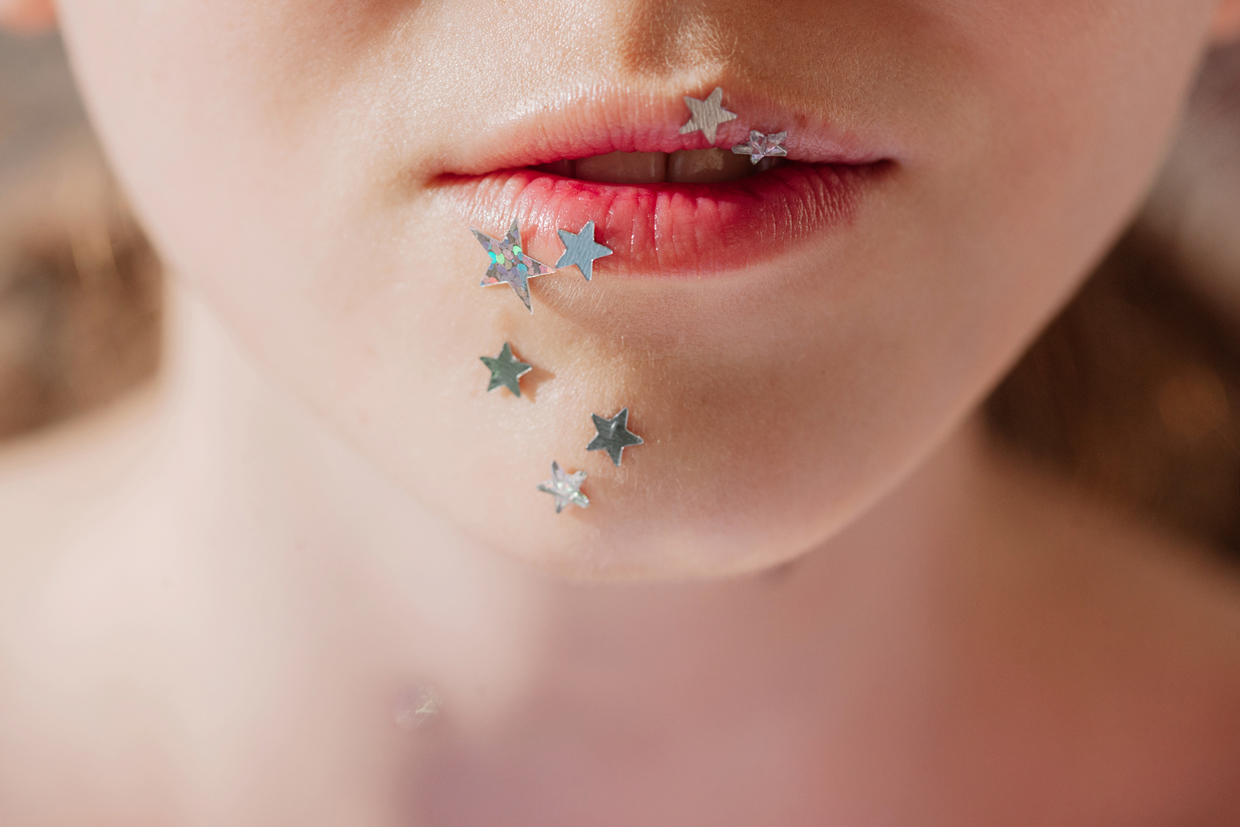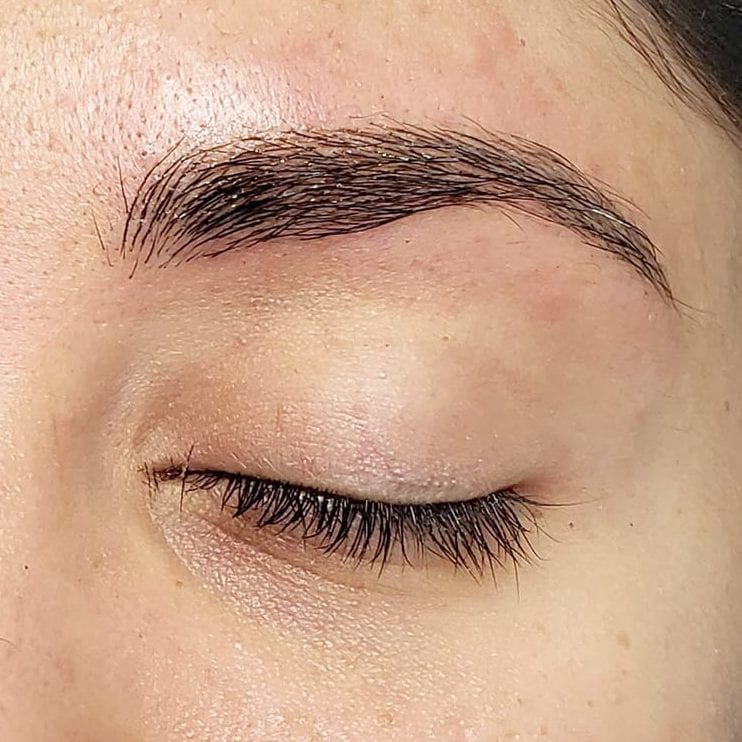If last year’s most buzzed-about lip procedure was the lip flip (Botoxing the upper lip to make it flip upward), it’s all about lip blushing this year. Though it’s been around for a few years, it’s gained in popularity as our obsession with youthful-looking pouts continues to plump up. “People are starting to see the amazing results that are circulating on social media and the internet,” says Christine Hwang, owner and artist of New Face by Christine, who performs the procedure. Let’s dig into the nitty-gritty — here’s everything you need to know about the latest lip craze.
What Is Lip Blushing
Hwang explains: “It’s a cosmetic tattoo procedure, which is done by implanting permanent makeup pigments or tattoo inks into the skin’s dermis. It is not a tint, stain or makeup that sits above the skin.” But it’s not the same as tattooed-on makeup. Blushing is more pixelated and gives the illusion of fullness rather than just permanent lip color. According to Miranda Cyre, who performs the procedure at Studio Sashiko in Langley, B.C., lip blushing “is designed to enhance the natural lips of the client. It doesn’t add volume to the lips, just the appearance of volume.” She says there are three types of blushing: For starters, “Natural lip blush is for those with paler lips, who are looking to improve the overall tone of their lips, gain more symmetry or having a more defined lip border.” Second are neutralizations for women with dark lips. “This service works on using complementary colors to cancel out the dark tones in an individual’s lips. While the initial result looks more dramatic, the healed results for those clients can be life-changing.” And the third style is restorative lip blush. “This is for clients that have experienced trauma to their lips such as burns, cuts or tissue removal, or those born with cleft lip or cleft palate,” explains Cyre. “Skilled artists are able to create the appearance of a more defined and balanced lip line.”
Why Do It?
Because you want your lips to look slightly different, maybe the lips have thinned and paled with age or are uneven. “Lip blushing can create the illusion of fullness by adding a better-defined shape and vivid color,” says Hwang. “If someone doesn’t have a clear shape or outline to their lips, has colorless lips, is unhappy with the overall look or is not satisfied with just filler, then this is a great procedure for them.” Hwang says many of her clients are older women “with shrinking lips and colorless lips who want to restore the youthfulness they had before.”
It also gives the lips more pigment, so if you want to wake up with a dusty rose lip every morning (or whatever shade you choose), the technician can help achieve that.
Hwang says blushing is a good alternative to lip fillers. “Fillers can add volume where needed, but cannot add the clear definition and border or color the way lip blushing can.” Blushing can also be done in conjunction with fillers. Cyre adds that it’s a more natural way of enhancing what you already have.

Who Should Avoid Lip Blushing
For starters, both men and women are blushing. But not everyone can or should partake. “Individuals with extremely wrinkled lips, extremely dark lips that are almost black, or those with tough skin” should avoid lip blushing, says Cyre. Also, “Clients with a compromised lip condition, including cold sores, split and cracked lips, bruised lips or dry lips, should avoid it until their lip skin is back to normal.” She explains that the resulting look will either be minimal or undesirable — not worth the expense and effort. If you suffer from cold sore outbreaks, “Lip blushing will almost always cause a cold sore flare-up,” says Cyre. Easy fix: Get antiviral medication from your doctor before treatment.
Women who are pregnant or breastfeeding shouldn’t do lip blushing. And anyone with a serious medical condition, including those with diabetes, high blood pressure or thyroid conditions, should get the go-ahead from their doctor before considering lip blushing. Hwang says that anyone with a severe allergy to lidocaine, topical anesthetics or tattoo ink isn’t a good candidate. Also, “We cannot work on anyone with skin conditions directly on the area to be tattooed, like psoriasis, eczema or rosacea,” says Hwang.
The Process: Before, During, After
Hwang says it’s super important to follow prep and aftercare instructions for the best results and better color retention. This includes exfoliating and deeply moisturizing lips for a few days prior to the tattoo. “Exfoliating dead skin ensures smoothness, and moisturizing ensures smoother color deposit.” She also advises hydrating with plenty of water: “This helps your skin function at its best and be supple.” Caffeine and alcohol should be avoided before your appointment. As with all skin treatments and surgeries, there are risks of bleeding and pain. “Caffeine and alcohol can thin the blood and if it’s still in your system while you’re getting tattooed, it can make you more sensitive to pain and also bleed much more,” says Hwang, adding that small amounts of pinpoint bleeding are normal, “But runny blood isn’t good for the artist and also not good for the client, as it risks less-than-ideal color retention.”
The actual procedure generally takes between two to three hours. Is it painful? It depends on the client, says Cyre. “Some fall asleep, while others experience more discomfort. I use three different types of numbing throughout to keep my clients as comfortable as possible.”
Aftercare can make or break the procedure, according to the pros, who provide clients with aftercare instructions. This includes avoiding makeup, skincare products, food or water contact, sun exposure, steamy-hot showers and exercise for the first week. Daily sunscreen on the lips is a must following that first week.
Results: What to Expect
The range of swelling goes from “absolutely minimal to very swollen,” says Hwang. “It takes about one to three days for swelling to disappear and four to seven days to finish peeling.” The final color is usually “settled in” a couple of weeks after peeling. Cyre says clients are initially surprised by the vibrancy of the color. “But the pigments used are designed to fade once healed.”
Touchup appointments are required for color maintenance. “Lip blush is semi-permanent, so results will typically last anywhere from one to five years depending on the aftercare,” explains Cyre. “Most people will need their initial session and a touch-up to achieve their desired results. In some cases, such as neutralization, a third session may be necessary to achieve the target shade.” She says annual touch-ups are recommended to freshen up the color.
Other Considerations
How much does lip blushing cost? According to Hwang, “Good work generally starts at $500 and goes upwards of $1,000 or more.” (She charges $1,200, which includes a touchup within one year.) Touchups are typically $150 to $500 per session. Hwang adds extra caution: “Do not choose your artist based on cost — this is your face!”
What if you do have a botched job — can it be fixed? “There is no safe way to remove lip blush that won’t compromise the integrity of the skin and possibly prevent the opportunity for a cover-up,” says Cyre. So how do you find a qualified technician? Read reviews, and “Make sure they are licensed, certified, and have lots of photos to share. Beware of an artist with very few photos.” And look among the photos to see who has similar before lips to you and after that you want, especially if you’re doing a neutralization, says Cyre. “Not all artists are skilled at these, or have even taken the necessary education to offer these services, and if you’re looking to lighten dark lips and go to someone who doesn’t know what they’re doing, you may end up with darker lips than you started with.” Cyre also advises sending the technician photos of your lips beforehand “to ensure they feel comfortable working with your type of lips.”
We only recommend products we have independently researched, tested, and loved. If you purchase a product found through our links, Sunday Edit may earn an affiliate commission.







